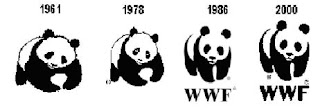Malaysia covers an area of about 329,758 square kilometers, consisting of Peninsular Malaysia, the states of Sabah and Sarawak and the Federal Territory of Labuan in the north-western coastal area of Borneo Island. The two regions are separated by about 531.1 kilometers of South China Sea. Peninsular Malaysia, covering 131,598 square kilometers, has its frontiers with Thailand in the North and Singapore in the South, while Sabah with an area of 73,711 square kilometers and Sarawak about 124,449 square kilometers, border the territory of Indonesian’s Kalimantan province.
States in Peninsular Malaysia
· Johore, Kedah, Kelantan, Melaka, Negeri Sembilan, Pahang, Pulau Pinang, Perak, Perlis, Selangor, Terengganu and the Federal Territories of Kuala Lumpur and Putrajaya. Pahang with an area of 35,965 square kilometers is the largest state in Peninsular Malaysia.
State of Sabah consists of five divisions· Tawau, Sandakan, Kudat, West Coast and Interior. The Federal Territory of Labuan, covering an area of 91 square kilometers is situated off the west coast of Sabah.
Sarawak comprises nine divisions
· Kuching, Sri Aman, Sibu, Miri, Sarikei, Limbang, Kapit, Bintulu and Kota Samarahan.
Malaysia lies near the Equator between latitudes 1º and 7º North and longitudes 100º and 119º East. The year is generally divided into the South-East and the North-East Monsoon seasons. The average daily temperature throughout Malaysia varies from 21ºC to 32ºC. Humidity is 80% high.
Malaysia’s rainforest is considered as the oldest in the world. The diverse species of animal and plant life continue to excite a great deal of scientific research. Many believe that some undiscovered plant may hold cures to many currently incurable human diseases.
It is estimated that over 15,000 flowering plant species (9% of world’s total) and 185,000 animal species (16% world’s total) are found in Malaysia.
· Malaysia’s flowering plants include some 2,000 types of trees, including 200 different palms and 3,000 species of orchids. The world’s largest flower, the Rafflesia is unique to the region. The towering Tualang tree (record-breaker), is the tallest of all tropical trees. It can reach up to 80 meters (260ft) in height.
· Malaysia rainforest holds hundred of thousands of animal species, many which are unique to the region and the world. A total of 286 species of mammals, 736 species of birds, 406 species of amphibians and reptiles and more than 100,000 species of insects have been recorded in the country. Among the mammals which live here include
tigers, elephants, rhinoceros, tapirs, civet cat, leopards, bears and
two kinds of gibbons and monkeys. Sabah and Sarawak are homes of the extraordinary
Orang Utan.
·
The two species of crocodiles in Malaysia are the estuarine crocodile and gharial. Crocodiles are known to inhabit large rivers especially in Sarawak. The river terrapins are found in major system in the peninsular is in the rivers of Perak, Kedah, Terengganu and Pahang.
· The east coast of Peninsular Malaysia provides one of the most important landing sites for marine turtles especially the leatherback turtle. Rantau Abang in Terengganu is the main landing site for the leatherback turtles in the country. The turtle Islands of the coast of Sabah are also important for the conservation of marine turtles in the region.
· The important areas for migratory birds include Kuala Gula in Perak, Pulau Bruit in Sarawak and the coastal areas of Sabah.
· The fresh water fish which is most abundant in Malaysia is the carp. Other types are, the kelesa, sebarau, toman and haruan.








